Durham's often-noted rough-around-the-edges reputation is nothing new - in the mid-to-late 19th century, the town was well known for its multiple saloons - the place where students from the University of North Carolina would come for some less-than-genteel entertainment (many of them would disembark from the train in Durham and head onward to Chapel Hill by other means.)
The Carrington bar, located at the northwest corner of S. Mangum and Peabody (now Ramseur), was one of these early establishments. This picture, from the 1880s, looking northwest, shows the Hotel Claiborn in the background.
By 1902, the Women's Christian Temperance Union had succeeded in prodding the city to pass prohibition, and the saloons were no more.
Below, Same view of the former Carrington Bar, looking a bit worse for wear, with the Durham Silk Hoisery Mill in the background, likely early 1920s. Note how close these structures were to the railroad tracks - Peabody St. did run sporadically between the tracks and buildings north of the tracks, but it was no more than a small-ish two-lane street.
(Courtesy Duke Archives)
By the later 1920s, the old bar had been renovated, and we see the other commercial structures between the bar and Main St., including the back of the Sneed-Markham-Taylor building, profiled yesterday.
(Courtesy Durham County Library)
And I felt the need to blow up this shot more to show two things: one, the awesome snake, and two, the 2-story commercial structure at the right, just behind the SMT building. The writing surrounding the windows on the second floor looks oddly like hieroglyphics to me from this angle - but I can make out "Tailoring".
(Courtesy Durham County Library)
My hieroglyphics building was demolished along with the SMT building to make room for the Kress building in 1933, but the next building to the south remained. I love the shot below of 114 South Mangum; the building is great - the brick detailing at the cornice is amazing. But also, the guy out front is just cool. And third, it's "The Lincoln Cafe" - which, all put together, just makes me wish I could walk down Main St., take a turn at Mangum and end up at this place.
Looking northwest from S. Mangum St., 1963
The Lincoln Cafe had started life as an "Eating House" run by Oscar Page - it appears that this may have meant that it was a restaurant that took boarders. It first appears between 1912 and 1915. In 1919 it is listed as:
Page’s Café: meals at reasonable rates and furnished rooms; the best colored hotel in town. Oscar S. Page, popr
In 1923, it is called the Lincoln Cafe, and the proprietors were Mike Galifianakis and M Leonakis, both of whom lived on site. Both were Greek immigrants who had recently come to the U.S. at that time. The cafe continued to serve a predominantly African-American clientele.
Below, the other buildings to the south of the Lincoln Cafe. The Silk Hosiery Mills Building looms behind them.
Looking northwest from Peabody (now Ramseur), 1963.
These buildings were taken by Urban Renewal and demolished for the Loop and surface parking.
Looking northwest from Ramseur and Mangum, 2007.

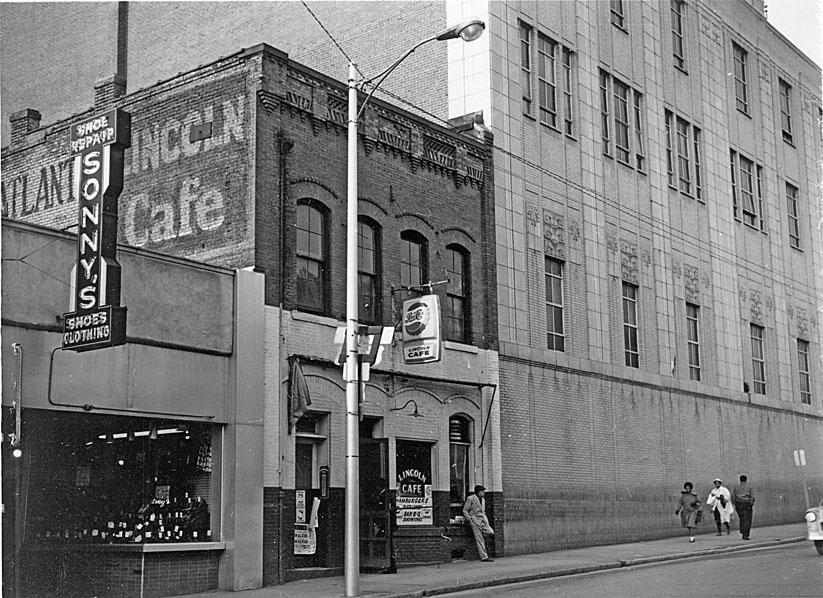
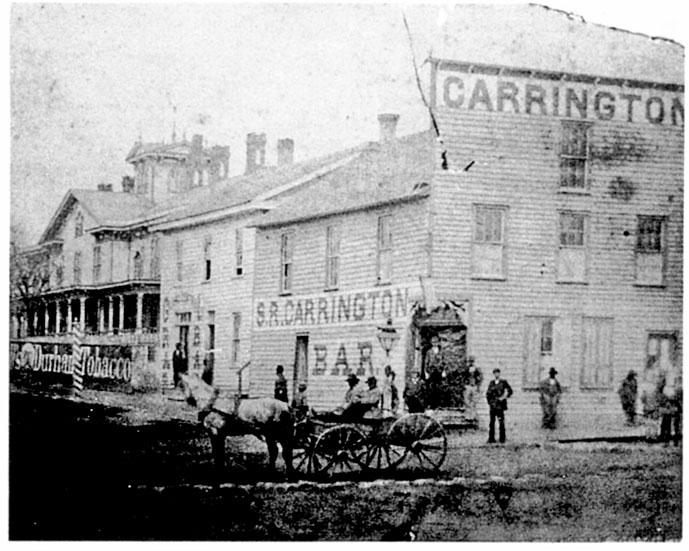
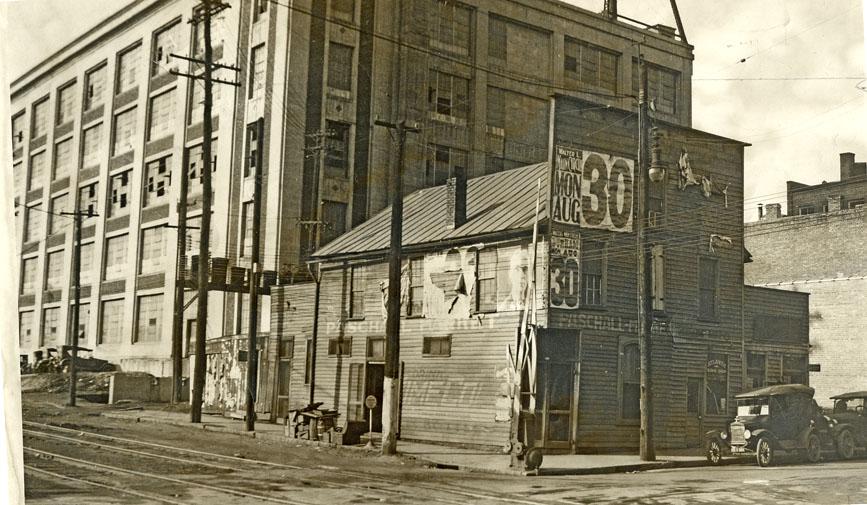
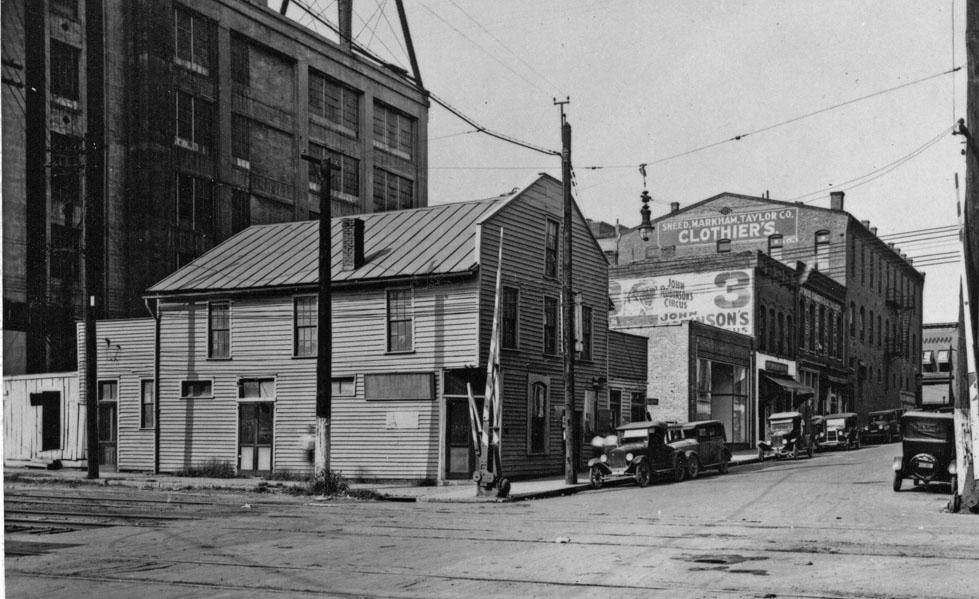
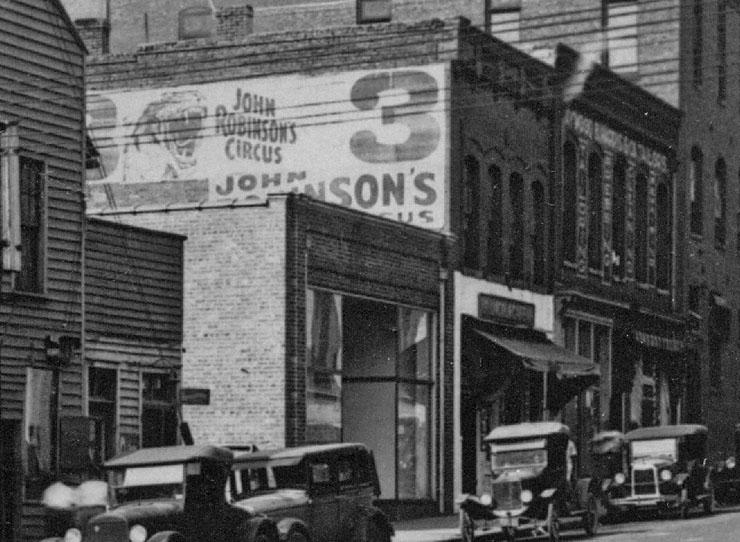
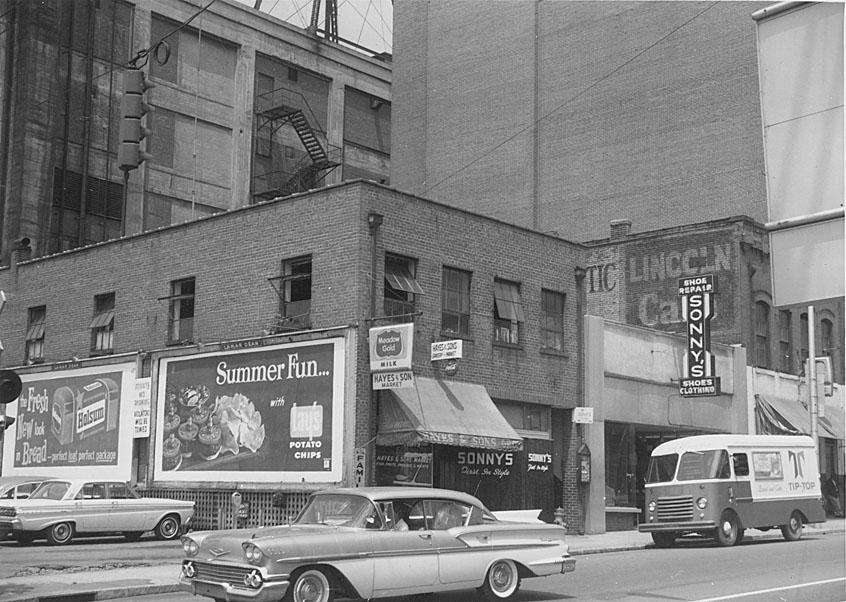

Add new comment
Log in or register to post comments.